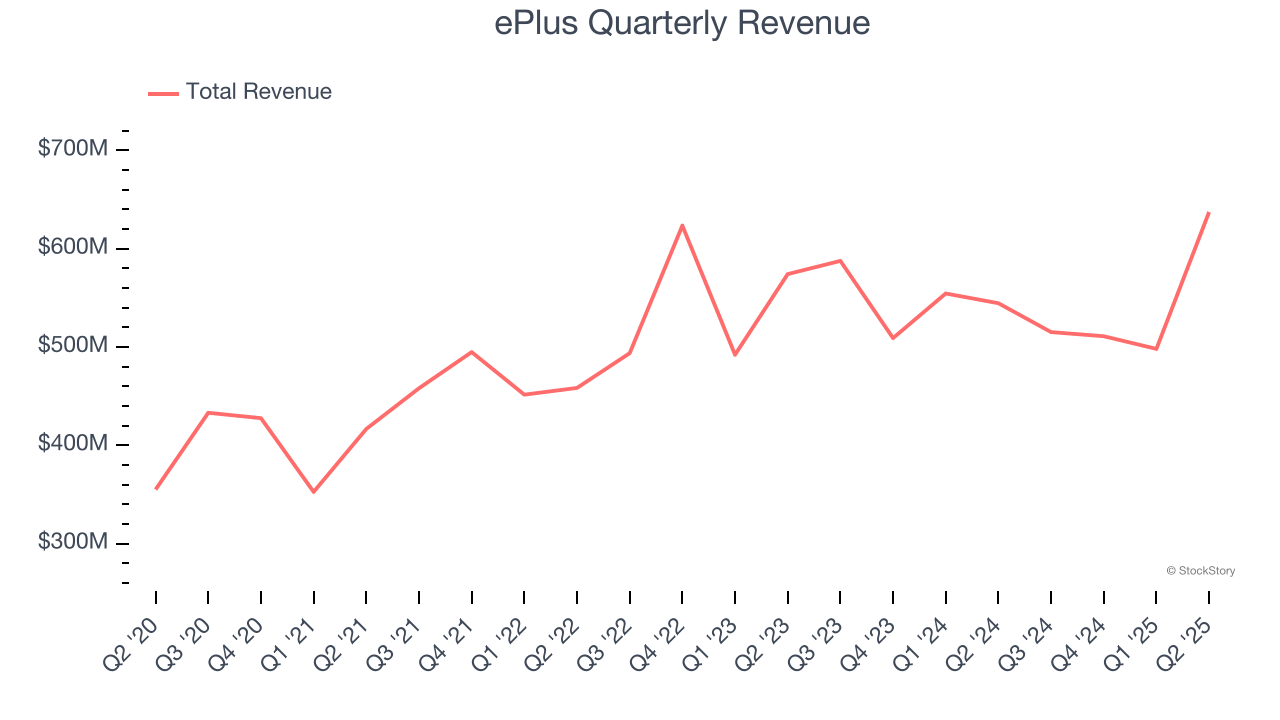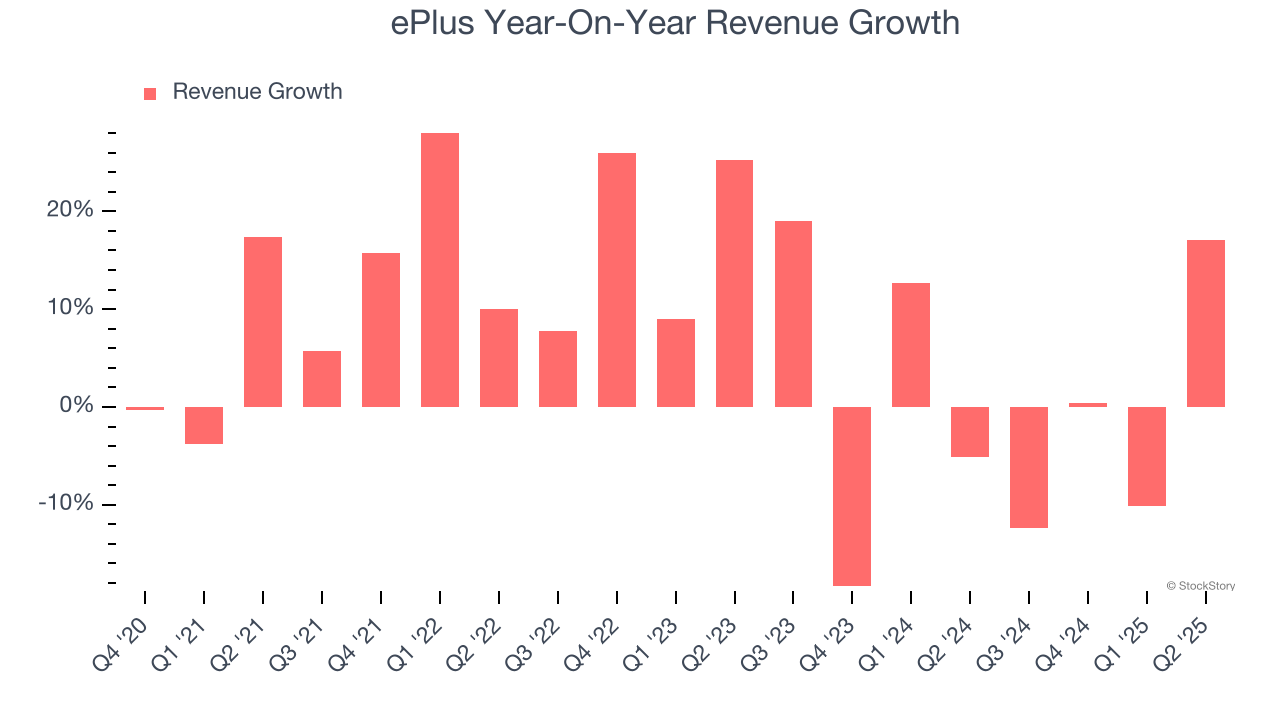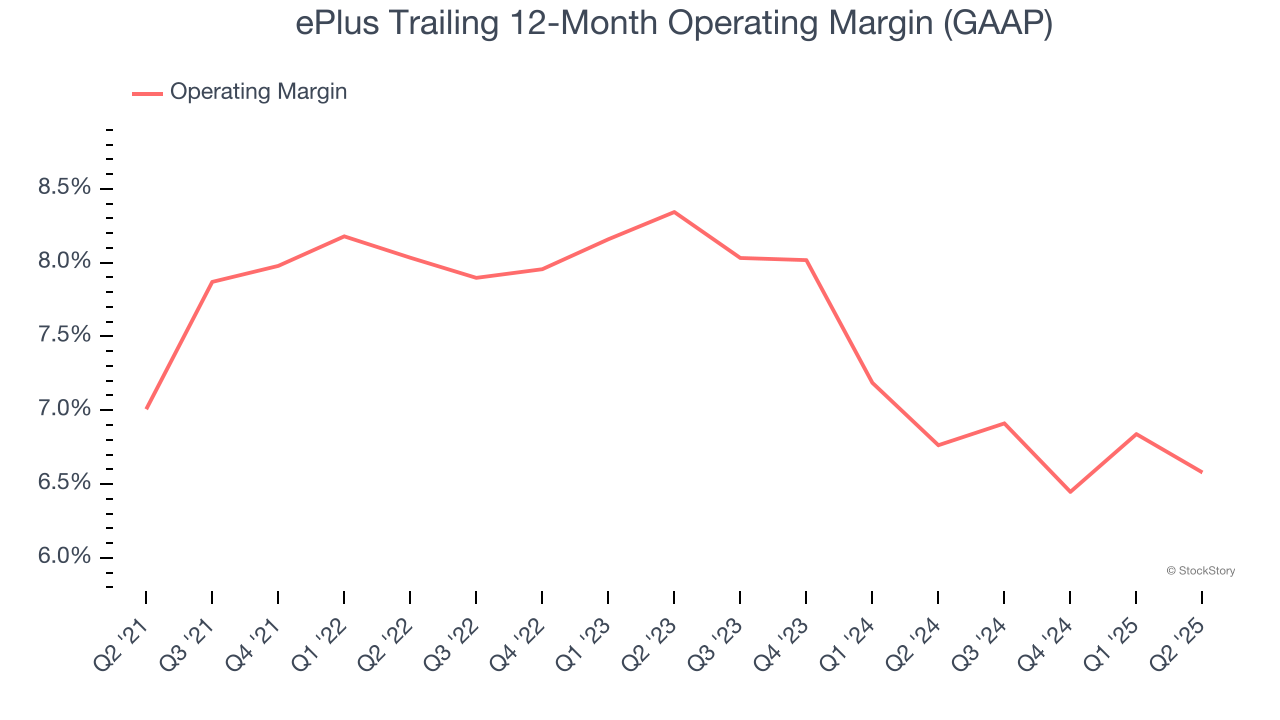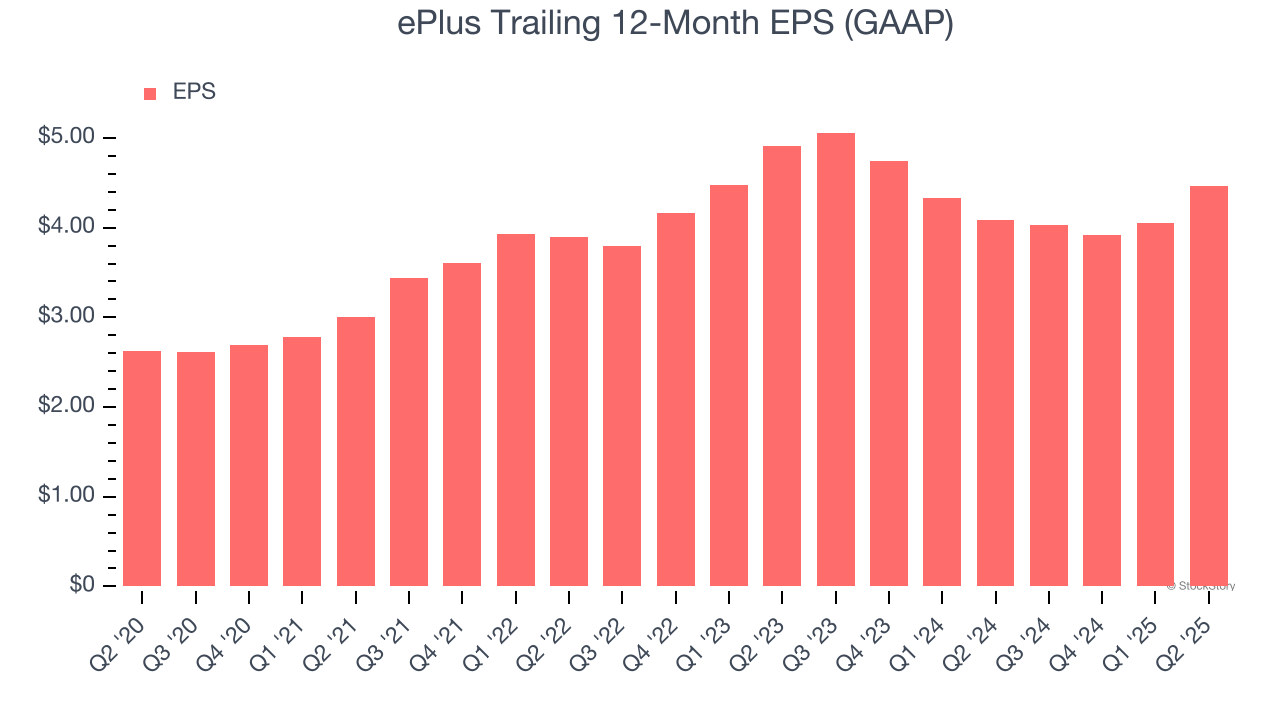
IT solutions provider ePlus (NASDAQ: PLUS) reported Q2 CY2025 results beating Wall Street’s revenue expectations, with sales up 17% year on year to $637.3 million. Its GAAP profit of $1.43 per share was 55.4% above analysts’ consensus estimates.
Is now the time to buy ePlus? Find out by accessing our full research report, it’s free.
ePlus (PLUS) Q2 CY2025 Highlights:
- Revenue: $637.3 million vs analyst estimates of $516.7 million (17% year-on-year growth, 23.3% beat)
- EPS (GAAP): $1.43 vs analyst estimates of $0.92 (55.4% beat)
- Adjusted EBITDA: $46.7 million vs analyst estimates of $43.15 million (7.3% margin, 8.2% beat)
- Operating Margin: 5.7%, in line with the same quarter last year
- Market Capitalization: $1.67 billion
"Fiscal 2026 is off to a strong start both financially and strategically. We reported double digit growth across key financial metrics, including revenue, gross profit, and earnings per share. Our services business continues to be a standout, increasing nearly 50% in the quarter," commented Mark Marron, president and CEO of ePlus.
Company Overview
Starting as a financing company in 1990 before evolving into a full-service technology provider, ePlus (NASDAQ: PLUS) provides comprehensive IT solutions, professional services, and financing options to help organizations optimize their technology infrastructure and supply chain processes.
Revenue Growth
A company’s long-term sales performance is one signal of its overall quality. Any business can have short-term success, but a top-tier one grows for years.
With $2.16 billion in revenue over the past 12 months, ePlus is a mid-sized business services company, which sometimes brings disadvantages compared to larger competitors benefiting from better economies of scale. On the bright side, it can still flex high growth rates because it’s working from a smaller revenue base.
As you can see below, ePlus’s 7.4% annualized revenue growth over the last five years was solid. This shows it had high demand, a useful starting point for our analysis.

We at StockStory place the most emphasis on long-term growth, but within business services, a half-decade historical view may miss recent innovations or disruptive industry trends. ePlus’s recent performance shows its demand has slowed as its revenue was flat over the last two years. 
This quarter, ePlus reported year-on-year revenue growth of 17%, and its $637.3 million of revenue exceeded Wall Street’s estimates by 23.3%.
Looking ahead, sell-side analysts expect revenue to grow 3.6% over the next 12 months. While this projection implies its newer products and services will spur better top-line performance, it is still below average for the sector.
Today’s young investors won’t have read the timeless lessons in Gorilla Game: Picking Winners In High Technology because it was written more than 20 years ago when Microsoft and Apple were first establishing their supremacy. But if we apply the same principles, then enterprise software stocks leveraging their own generative AI capabilities may well be the Gorillas of the future. So, in that spirit, we are excited to present our Special Free Report on a profitable, fast-growing enterprise software stock that is already riding the automation wave and looking to catch the generative AI next.
Operating Margin
Operating margin is an important measure of profitability as it shows the portion of revenue left after accounting for all core expenses – everything from the cost of goods sold to advertising and wages. It’s also useful for comparing profitability across companies with different levels of debt and tax rates because it excludes interest and taxes.
ePlus’s operating margin might fluctuated slightly over the last 12 months but has generally stayed the same, averaging 7.3% over the last five years. This profitability was paltry for a business services business and caused by its suboptimal cost structure.
Looking at the trend in its profitability, ePlus’s operating margin might fluctuated slightly but has generally stayed the same over the last five years. This raises questions about the company’s expense base because its revenue growth should have given it leverage on its fixed costs, resulting in better economies of scale and profitability.

This quarter, ePlus generated an operating margin profit margin of 5.7%, in line with the same quarter last year. This indicates the company’s overall cost structure has been relatively stable.
Earnings Per Share
Revenue trends explain a company’s historical growth, but the long-term change in earnings per share (EPS) points to the profitability of that growth – for example, a company could inflate its sales through excessive spending on advertising and promotions.
ePlus’s EPS grew at a remarkable 11.1% compounded annual growth rate over the last five years, higher than its 7.4% annualized revenue growth. However, this alone doesn’t tell us much about its business quality because its operating margin didn’t improve.

Like with revenue, we analyze EPS over a shorter period to see if we are missing a change in the business.
For ePlus, its two-year annual EPS declines of 4.7% mark a reversal from its (seemingly) healthy five-year trend. We hope ePlus can return to earnings growth in the future.
In Q2, ePlus reported EPS at $1.43, up from $1.02 in the same quarter last year. This print easily cleared analysts’ estimates, and shareholders should be content with the results. We also like to analyze expected EPS growth based on Wall Street analysts’ consensus projections, but there is insufficient data.
Key Takeaways from ePlus’s Q2 Results
We were impressed by how significantly ePlus blew past analysts’ EPS expectations this quarter. We were also excited its revenue outperformed Wall Street’s estimates by a wide margin. Zooming out, we think this quarter featured some important positives. The stock traded up 4% to $66.01 immediately following the results.
ePlus may have had a good quarter, but does that mean you should invest right now? When making that decision, it’s important to consider its valuation, business qualities, as well as what has happened in the latest quarter. We cover that in our actionable full research report which you can read here, it’s free.




